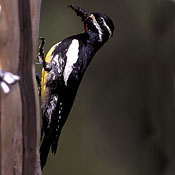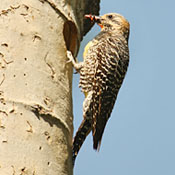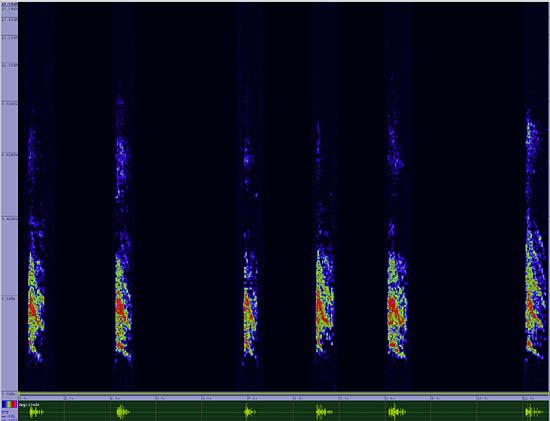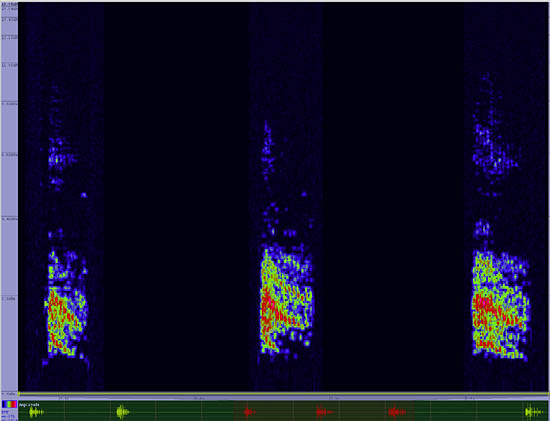Williamson's Sapsucker
Sphyrapicus thyroideus

Tree Clinging

Length: 9 in. (23 cm )
Large sap wells are excavated in shallow but neat rows on the bark of a tree, and they are usually the first evidence of this sapsucker\s presence. The oozing sap as well as the insects attracted to it serve as a major source of food at some times of the year. The Williamson\'s Sapsucker is found in mountainous conifer forests and also feeds on ants and fruit in different seasons. The nest cavity is excavated in a conifer trunk from low down to almost the canopy. In the winter the females go to more open areas and are seldom found together with males.'
The four-digit banding code is WISA.
Bibliographic details:
- Article: Williamson's Sapsucker
- Author(s): Dr. Biology
- Publisher: Arizona State University School of Life Sciences Ask A Biologist
- Site name: ASU - Ask A Biologist
- Date published: 13 Jul, 2017
- Date accessed: 24 July, 2025
- Link: https://askabiologist.asu.edu/activities/bird/williamsons-sapsucker
APA Style
Dr. Biology. (Thu, 07/13/2017 - 15:38). Williamson's Sapsucker. ASU - Ask A Biologist. Retrieved from https://askabiologist.asu.edu/activities/bird/williamsons-sapsucker
Chicago Manual of Style
Dr. Biology. "Williamson's Sapsucker". ASU - Ask A Biologist. 13 Jul 2017. https://askabiologist.asu.edu/activities/bird/williamsons-sapsucker
MLA 2017 Style
Dr. Biology. "Williamson's Sapsucker". ASU - Ask A Biologist. 13 Jul 2017. ASU - Ask A Biologist, Web. https://askabiologist.asu.edu/activities/bird/williamsons-sapsucker
Be Part of
Ask A Biologist
By volunteering, or simply sending us feedback on the site. Scientists, teachers, writers, illustrators, and translators are all important to the program. If you are interested in helping with the website we have a Volunteers page to get the process started.








